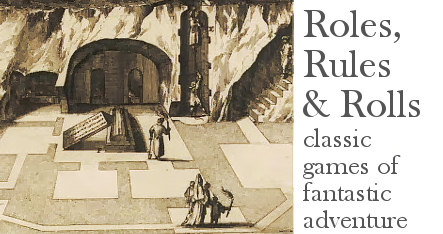I've had enough experience now with the spell lists of D&D and with creating my own distillation and derivative to notice something. Prayer and Bless, spells that give mechanical bonuses to friends' die rolls, are boring. This is usually masked by the existence of more useful spells at their levels, so they are rarely memorized. But working them out for my own game,where B-list spells become useful due to the no-duplicate-spells rule ... yeah, there's still something tepid about mechanical bonuses.
Is it that spell-casters would rather strike with their own effects than throw buffs on friendly characters? Not really. Enlarge and Haste shimmer with awesomeness. In my own campaign, the lowly Shield spell conjures forth a short-range, moveable force shield that gives +5 AC,maximum 20, versus attacks from one direction. This has been most welcome.
No, the real problem is that bonus-giving spells are abstract, intangible, bloodless. They exist in the rules, not in the world that characters can see or interact with. Look at the difference between:
* A Bless spell that gives you +1 to die rolls for a given time .... and one that sets a guardian angel over you, who lets you re-roll one die affecting you at any time.
* A Strength spell that gives you +4 to the stat ...and a Strength spell that lets you bend iron like lead, lift half a ton overhead, and wield a huge improvised weapon for d12+4 damage.
* A whammy that gives your sword a +2 enchantment ... or a mojo that makes it crackle with red fire for d6 extra damage, or glisten with arctic cold for+2 to hit and damage.
"Hey, but healing gives back abstract numbers - hit points -and it's highly desired!" That's true, but the exception proves the rule. Character types that do nothing but heal are derided as boring to play even if they're valuable to the party. Fortunately, the above examples give a formula to improve any boring effect:
Make it concrete. Make it material.
By creating a visible thing, rather than just tweaking a stat, you make it interesting. Let's apply it to boring, by-the-numbers healing.
* A healer who spins silk casts and bandages from her fingers like a laid-back Spider-Woman.
* A healer who blesses food to have healing properties, with the catch that there must be a different kind of food or drink in the feast for every 2 hp healed.
* A healer who needs to wash you in water for light wounds, a bath for critical wounds, and full Baptist immersion for the strongest effects.
* This dude from 3rd edition. He's great at regenerating limbs. If you're injured but not maimed, he'll grow you a new limb which you can use until the old one gets better, at which point it falls off.
One thing you'll notice about all these is that their presence in the material world starts sparking off ideas for creative uses, advantages and disadvantages, just like the Force Shield beyond giving an armor bonus can also be used to stop a door or carry a load. If something only affects the rules level, there is only one use for it. A big part of the old-school philosophy is letting things exist and work in analog simulation space: descriptive problem solving instead of (or at least in addition to) skill rolls. Making buffs (and magic item and monster effects) visible works with that.
The 3 Mile Hex - The Natural Unit for Exploration
22 hours ago













































